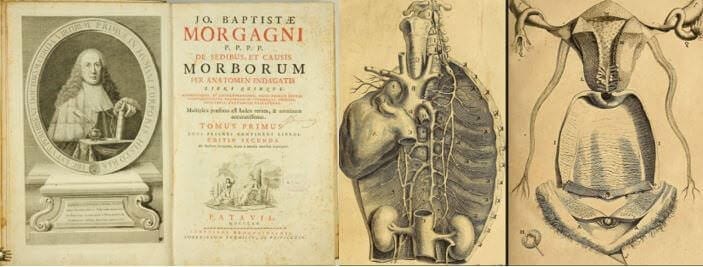Father of fifteen and teacher of thousands, Batista Morgagni became immortally famous by going one step further than his illustrious predecessors at Padua, describing not the normal anatomy of hanged criminals but the damaged organs of patients dying from disease. For this he is remembered as the father of pathological anatomy.
At the University of Padua he was professor of anatomy for fifty-six years, occupying the prestigious chair held earlier by Vesalius, Fallopius, and Fabricius. During his long life he published on various aspects of anatomy, culminating at the age of eighty in his De sedibus et causis morborum per anatomen indagates (Of the seats and causes of diseases investigated through anatomy) in which he arranged the descriptions of diseased organs according to the systems of the body and correlating them with the symptoms patients experienced during life. Several structures are eponymously named after him, notably the foramen of Morgagni and Morgagni’s hernia.


Leave a Reply